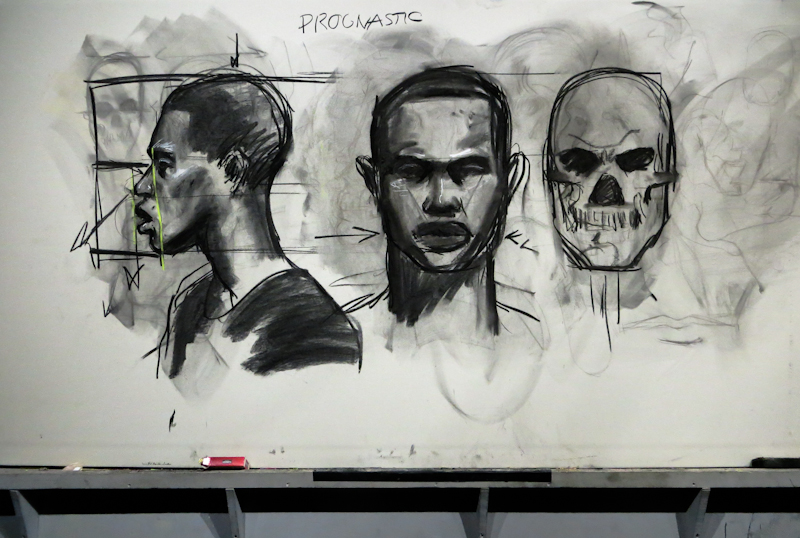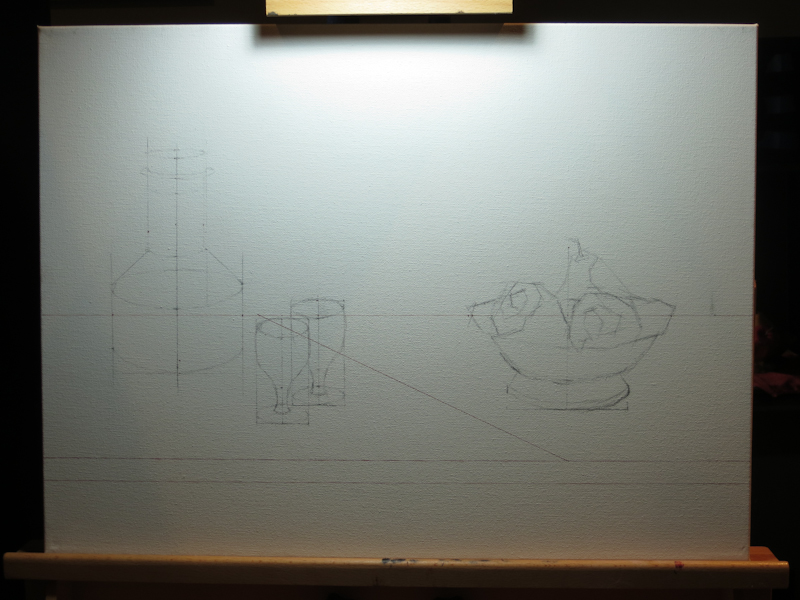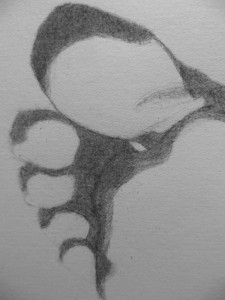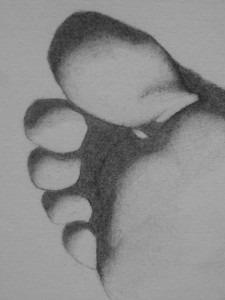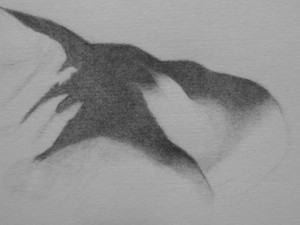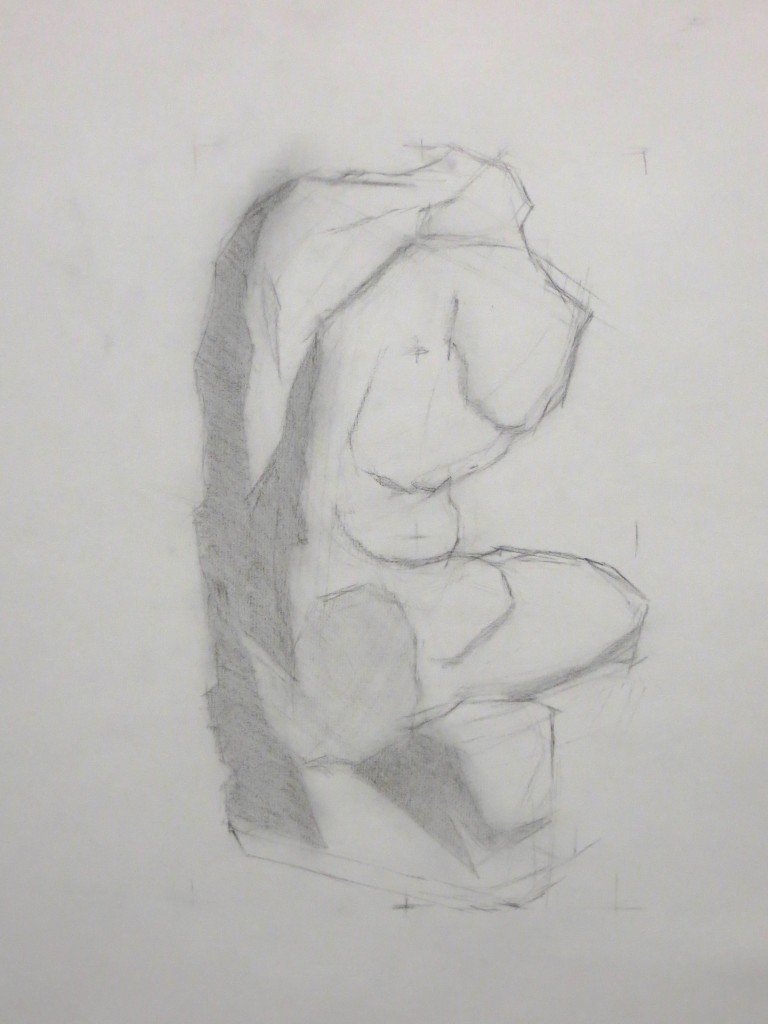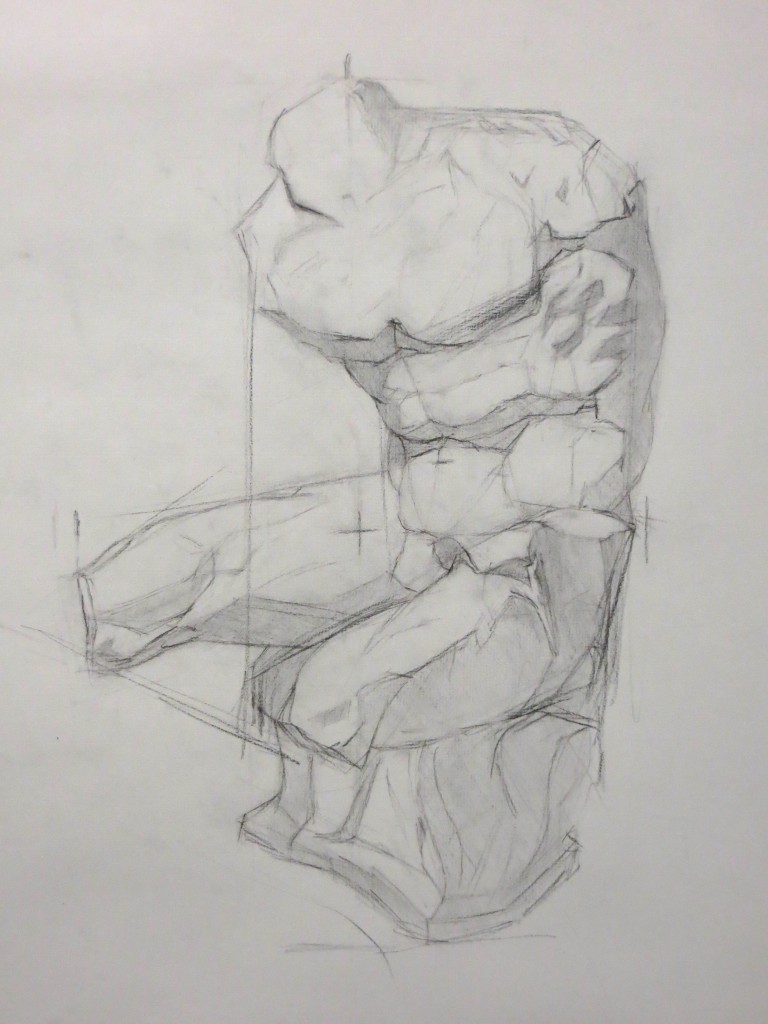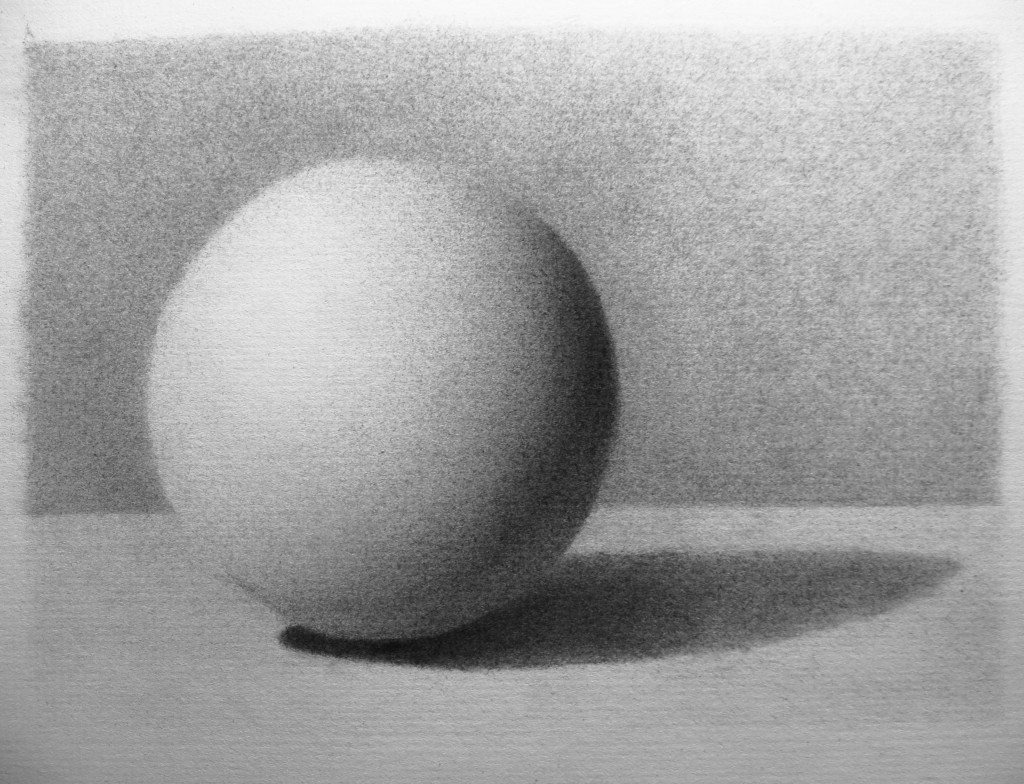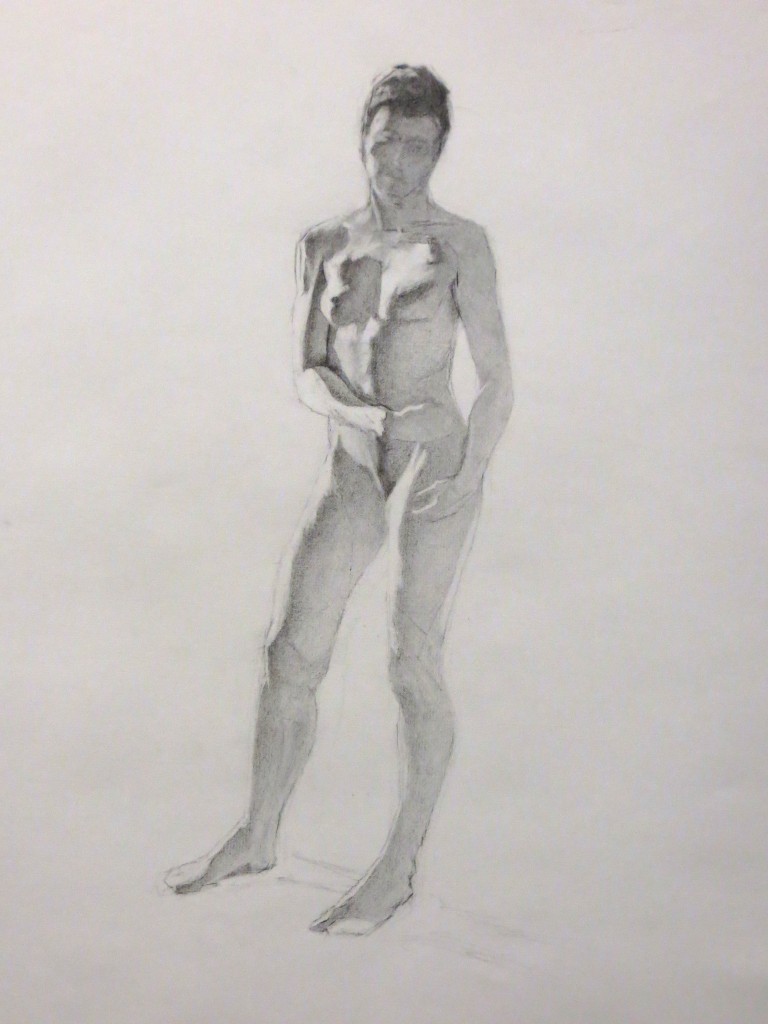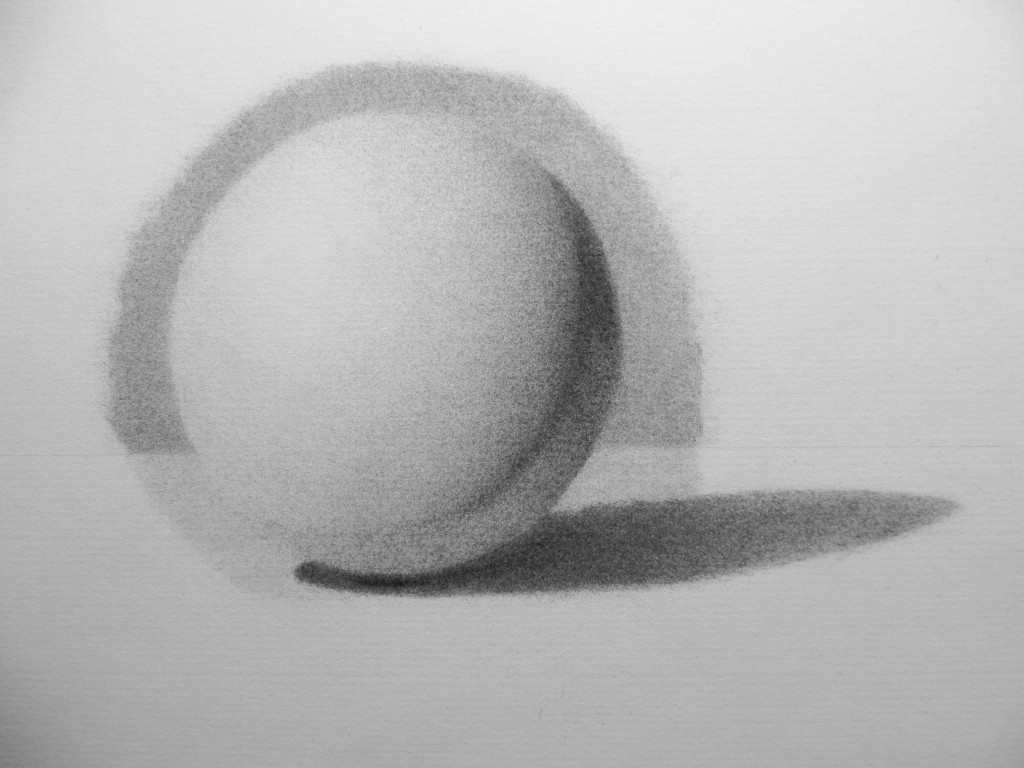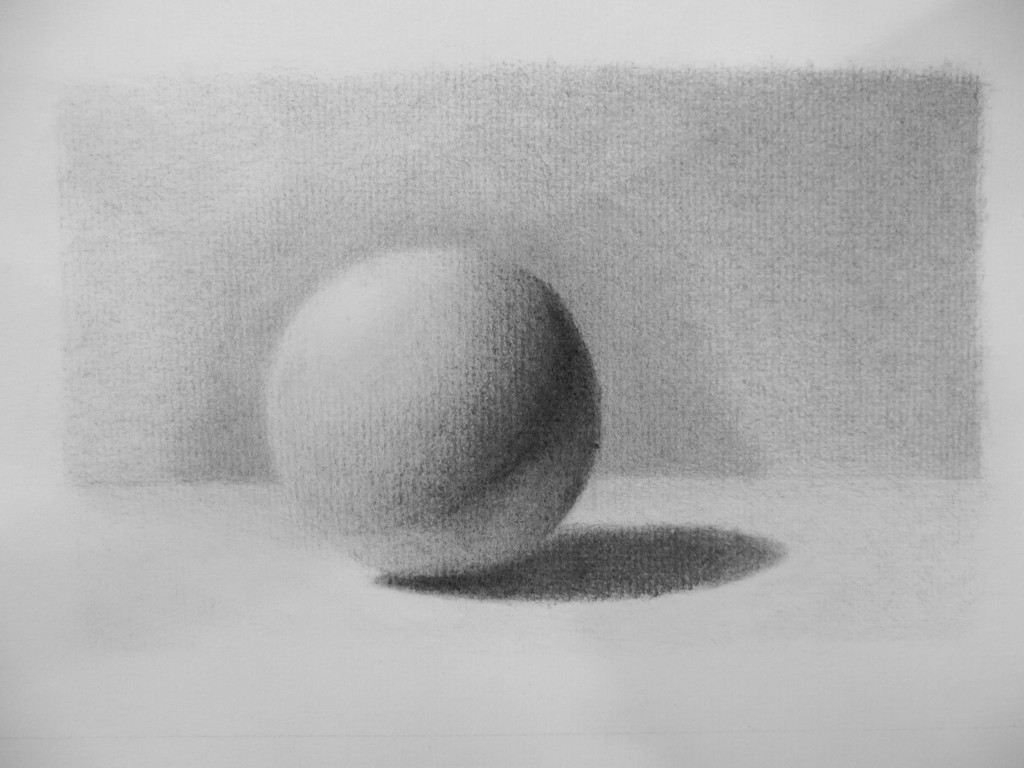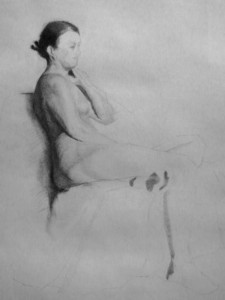Gary was on a roll tonight drawing and lecturing on features of the head.
Tag Archives: charcoal
Wine and Apples Full Scale Drawing
Made a bit of progress on my still life over the weekend. After finishing the color study, I did an 18″x24″ sketch in graphite to figure out the composition and the aspect ratios of the various ellipses. I tried a number of scales and small adjustments in item placement before settling on this design.
I redrew my design on my canvas using an Indian Red ink pen for the horizontals in the tabletop and the strong diagonal. My plan is to do an under painting in burnt sienna, so I’m hoping the inked lines will mostly disappear into the paint. The remaining items were sketched in vine charcoal. I didn’t use a fixative and am expecting the charcoal to fall away as I find the exact edges in paint.
Originally my plan was to do all the drawing with a paintbrush directly on the canvas, but I had so much fun with graphite compositional study that I just continued on the canvas. I still expect that I will make significant adjustments with the brush in the under painting.
Randy
Here’s another work in progress of Randy. I started this drawing with a number of gestures and then a block in, all in graphite. Once I had a good block in, I transferred it to a clean piece of Strathmore 500 charcoal paper and continued in vine charcoal. I actually like the block in better than the charcoal drawing – the block in has more energy and more interesting line quality.
Working on a Bargue Plate
Now that I’m able to render smooth tones in charcoal, I’ve started on a new Bargue plate copy. The plate I am copying is from the Charles Bargue Drawing Course which is a set of plates used to train classical artists in the late nineteenth century. The course begins with simple drawings from casts, initially focusing on individual body parts. It progresses to portraits, torsos, and finally full figures. Vincent van Gogh copied the complete set of plates in 1880 and 1881 and then again in 1890.
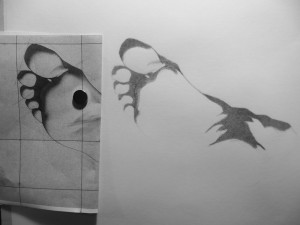
I’m using my magnetic drawing board to hold a copy of the Bargue plate while I draw. My goal here is to precisely locate all of the edges and shadow edges and then build up a uniform base level of shading in all of the shadow regions. At this point, I am not using intermediate tones to convey three dimensional form. This will come later once I am sure of the shapes and their locations.
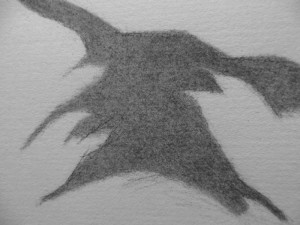
Here I am going back to clarify the locations of the core shadows before turning form. All of the shadow regions are still flat.
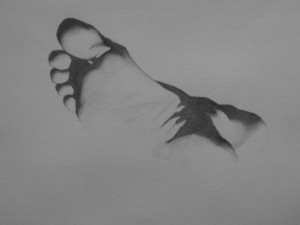
Here’s an overview of the plate shortly after starting to turn form. When the plate is finished, most of the transitions will be softer and very little will be pure white.
Another Belvedere Torso Block In
Cast Drawing
With the white sphere under my belt, I am ready to embark on my cast drawing which will likely occupy me the rest of the school year. I have chosed the Belvedere Torso as my subject and am in the early stages of exploring view points and lighting angles. Here is a block in from the first angle.
Sphere Finished!
Yma
Just finished a drawing of Yma. I didn’t really have enough time to do the face or a careful rendering, but I think the drawing shows potential.
Spheres keep rolling along
I am making slow, but steady progress on my white sphere. One of these days I will actually finish it. Here’s the update.
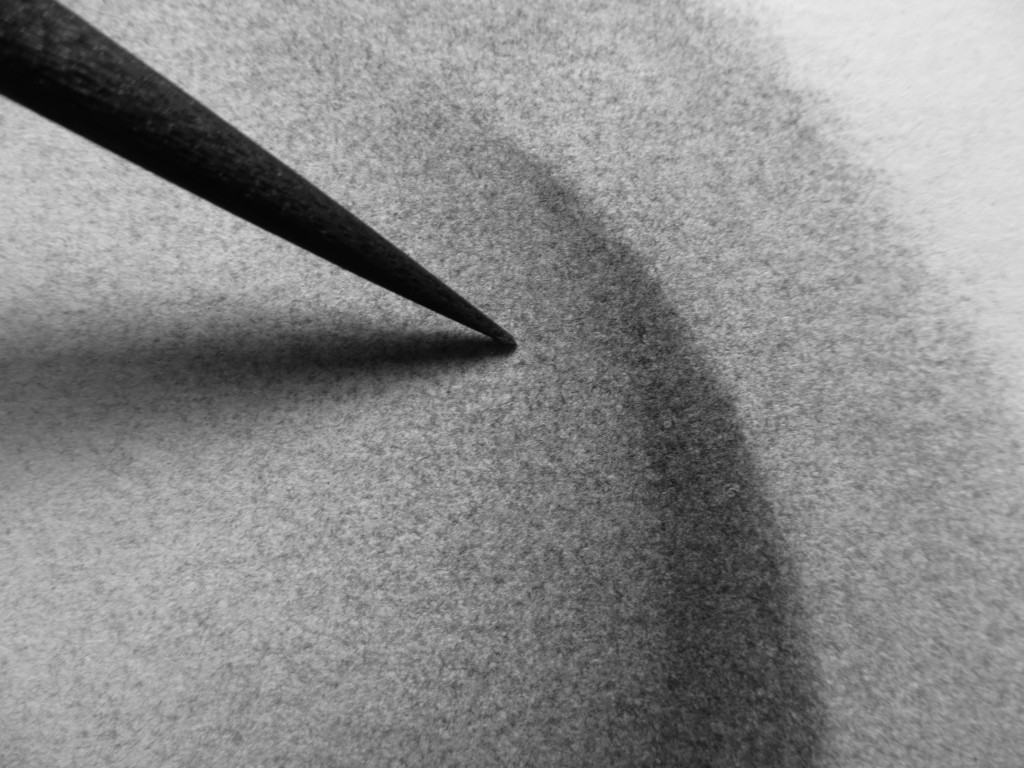
I use the very tip of a super sharp piece of charcoal to reach down inside each pit in the paper, without hitting the ridges.
Lauren
Lauren posed for four weeks in January. Normally this would translate to 20 three-hour sessions for a full time student. I got about eight sessions with this pose. I started with a very loose block in the first session, then started a second block in for the next session, and then transferred that block in to a clean piece of paper for the third session. This approach has its pros:
- One can draw very freely and more easily maintain the gesture while learning the pose.
- One can take risks and make changes without worrying about damaging the paper in a way that will hurt the final drawing.
- Doing multiple block ins from scratch really helps in seeing and learning the pose.
and its cons:
- The extra block ins take up time that could be used for rendering.
- When you transfer the block in to another sheet of paper, you almost always lose subtle visual cues that give the drawing life and cohesion.
I wasn’t very happy with the drawing at the end of the last session, but it has grown on me and it looks great in the photo.

